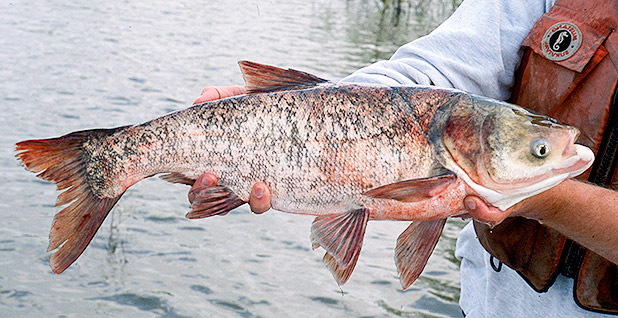 |
| Asian carp (Wisconsin Department of Natural Resources photo) |
The 488-page study focuses on the Brandon Road Lock and Dam in Joliet, Ill., which occupies a critical strategic point in the Illinois River system. The plan entails a series of physical and nonphysical barriers, some using experimental technology, to keep the fish from passing through. Proposed barriers include water cannons, noise obstacles, electrical barriers, boat launches, and more. Marc Smith, the conservation director for the National Wildlife Federation, says the NWF likes the concepts, but "we also know that this is not enough." Some barriers are not completely effective on their own, but the effects of so many working in tandem have not been studied. Would the combination of barriers increase effectiveness or could they cancel each other out sometimes and let a few fish through?
 |
| Milwaukee Journal Sentinel maps; click on the image to view a larger version |
Now the Army's old slogan "hurry up and wait" comes into play. The Corps will accept comments from the public about the plan until Sept. 21, and will schedule several public meetings to discuss the report. "After a feasibility study and series of federal and state reviews, a final report is scheduled for release in August 2019, John Flesher of The Associated Press reports. 'Congressional approval and funding would be required to get construction underway."
The major players all know that every carp that makes it into a Great Lake is a problem. Marc Gaden of the Great Lakes Fishery Commission said as few as 10 males and 10 females could establish an Asian carp population in the Great Lakes. They would directly compete with bass and walleye for habitat, and would "completely disrupt the food chain. Asian carp would dine on the plankton and small plant materials at the bottom of the food chain, causing population declines in forage fish," Smith-Schoenwalder reports.
No comments:
Post a Comment